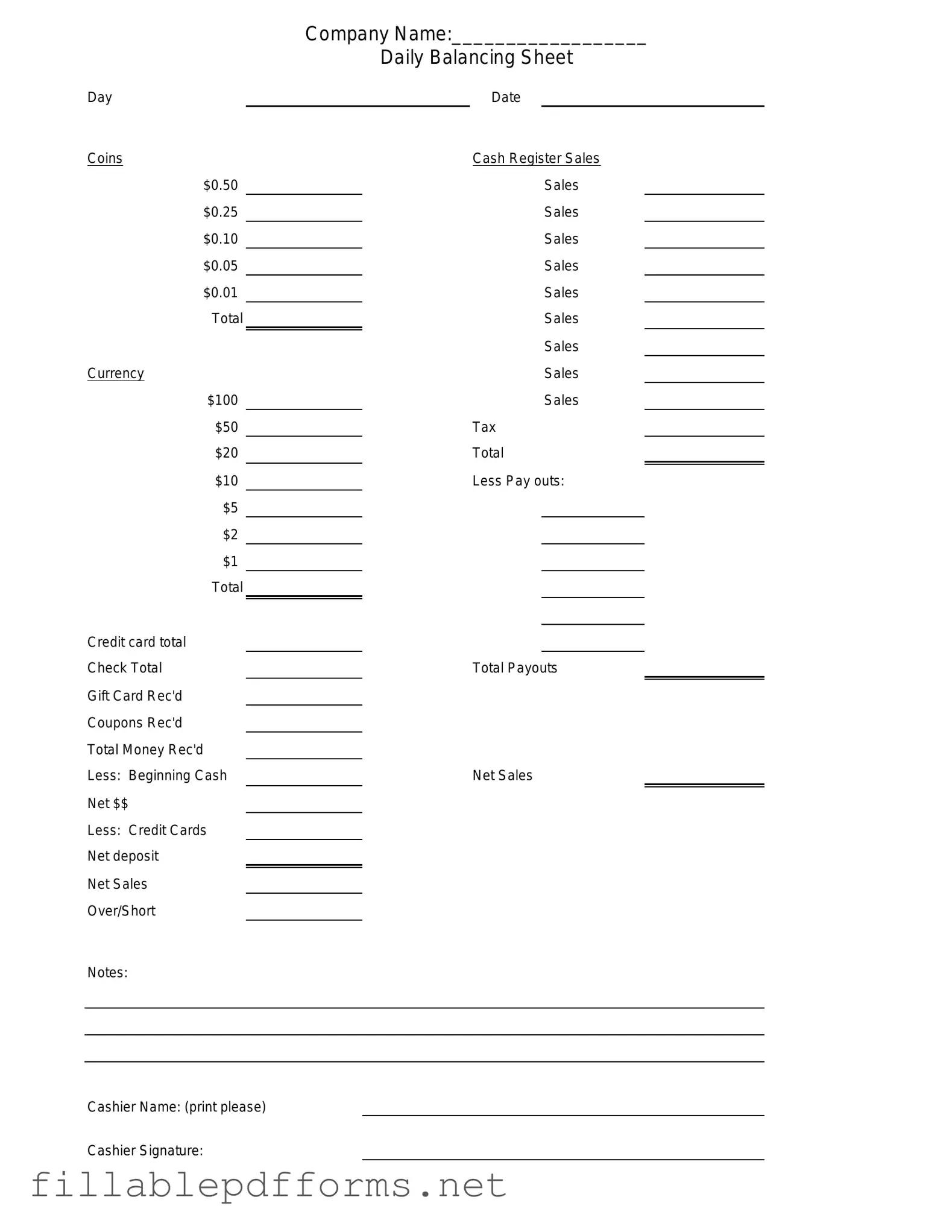Cash Drawer Count Sheet PDF Template
The Cash Drawer Count Sheet is a document used by businesses to record the cash amount present in a cash drawer at the end of a shift or business day. This form helps ensure accurate financial reporting and assists in identifying discrepancies. By maintaining a detailed record, businesses can enhance accountability and streamline cash management processes.
Launch Editor Here
